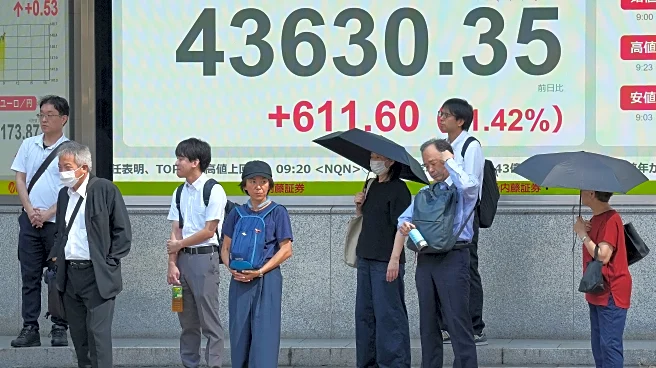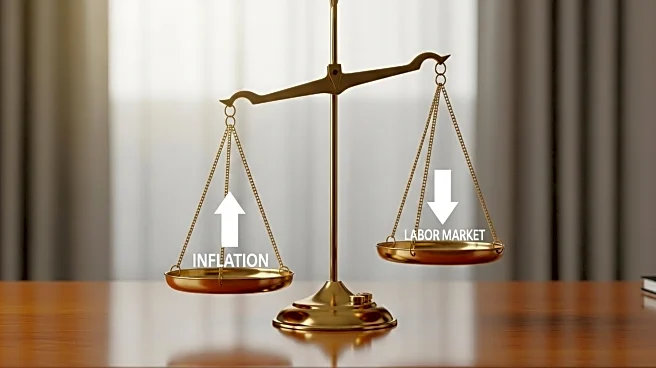What is the story about?
What's Happening?
The U.S. equity market is experiencing a critical phase as investors prepare for upcoming inflation data releases and Federal Reserve policy decisions. The S&P 500 and Nasdaq Composite have shown mixed short-term performance, prompting market participants to adjust strategies in response to increased volatility and changing macroeconomic signals. A potential Federal Reserve rate cut on September 17, driven by weak August nonfarm payrolls and a 4.3% unemployment rate, has already lowered the 10-year Treasury yield to 4.08%, its lowest since April. This environment presents both risks and opportunities for equity futures traders, especially as inflation remains above the Fed's 2% target at 3.1% for core CPI. Traders are focusing on sector rotation and defensive tilts, with mega-cap tech stocks dominating the S&P 500's weight, leaving defensive sectors like healthcare and utilities underrepresented.
Why It's Important?
The current market dynamics offer significant implications for U.S. industries and investors. The concentration in mega-cap tech stocks suggests potential vulnerability to market shifts, while defensive sectors like healthcare and utilities present opportunities for stable returns amid inflationary pressures. Institutional investors are increasingly favoring defensive allocations to mitigate downside risk, particularly as consumer spending and GDP growth show signs of moderation. The strategic positioning of portfolios through sector rotation aligned with the business cycle is crucial, as historically, utilities and consumer staples outperform during economic slowdowns. Additionally, hedging strategies using options and inflation-protected assets are gaining traction to manage macroeconomic surprises, highlighting the importance of proactive risk management.
What's Next?
As the Federal Reserve meeting on September 17 approaches, equity futures traders are expected to continue leveraging sector rotation and deploying hedging strategies to navigate market volatility. The interplay of inflation, trade policy, and central bank actions will shape future market dynamics, making tactical rebalancing a proactive tool for generating returns. Investors may also explore regional reallocation, with European markets gaining traction due to increased defense and infrastructure spending, contrasting with the weakening position of the U.S. dollar as a global reserve currency.
Beyond the Headlines
The broader implications of these market shifts include potential long-term changes in investment strategies and portfolio management. The focus on defensive sectors and regional diversification may lead to a reevaluation of traditional investment approaches, emphasizing agility and responsiveness to macroeconomic signals. The geopolitical landscape, particularly in energy markets, remains a wildcard, underscoring the need for liquidity and flexibility in hedging portfolios.
AI Generated Content
Do you find this article useful?















